Kala Kaustubha’, a book on the life and contributions of Sangeetha Kalanidhi Mysore T. Chowdiah, his compositions with notations and photographs, authored by SOM music critic Dr. Padmavathi Narasimhan will be released at a programme to be held on Sunday, 26th February at Nityotsava Convention Centre, Krishnamurthypuram, at 11 am. Renowned musician Chitraveena N. Ravikiran will release the book. Senior mridangist A.V. Anand will preside. Dr. Anasuya Kulkarni, senior disciple of T. Chowdiah, will speak about the book. Prior to the book release event, Vidu. Jyotsna Manjunath, who is the only seven stringed violinist today, will give a violin recital at 10.30 am.
Tirumakudalu Chowdiah was a gifted violinist and a legend in the realm of Karnatak music. He was at the forefront of establishing a bridge between musicians of the Mysore State and Madras (Chennai). When the Chowdiah Memorial Hall in Bangalore, built in the shape of a violin, was named after him, it was for the first time a musician in India had received such an honour.
Born to Agastye Gowda and Sundaramma in Tirumakudalu, a town 30 kms from Mysuru where the rivers Kaveri and Kapila merge, Chowdiah’s childhood was spent on the banks of these rivers, in the lush green fields and in the temples of Agasthyeshwara and Narasimha. Chowdiah learnt music from Gaanavisharada Bidaram Krishnappa, a vocalist and composer, who was an Asthana Vidwan (court musician) of the Mysore Royal Court.
His first public appearance, at the age of 17, was purely by chance as the violinist intended for the concert failed to turn up. Bidaram Krishnappa asked Chowdiah to accompany him on stage and he rose to the occasion and made a mark. From then on, Chowdiah was a regular accompanist to leading vocalists of the day. During a concert in Madras in early 1920, Chowdiah accompanied the leading vocalist of the day, Ariyakudi Ramanuja Iyengar, with his guru amongst the audience. Thereafter, he accompanied maestros like Chembai Vaidyanatha Bhagavathar, Musiri Subramaniya Iyer, Maharajapuram Viswanatha Iyer, G.N. Balasubramaniam, Alathur Brothers and others. Chowdiah’s dedication and devotion towards Karnatak music made him a renowned violinist. Under the guidance of his guru, he reached great heights. In addition to being a sought-after accompanist, Chowdiah was a soloist as well and his concerts attracted large crowds.
Innovative artiste
During concerts, he observed that people who sat in the back rows could not hear his recital properly and this was due to the fact that during his time, sound amplification devices were non-existent. To overcome this shortcoming, he developed an innovative idea and added three more strings to his four-stringed violin, and began to practice on it. From then onwards in all his concerts he used his improvised violin.
His guru however was unaware about Chowdiah’s endeavour. Eventually when his guru discovered his innovation, he was reportedly very angry. However on Veena Seshanna’s intervention his guru relented and later appreciated Chowdiah’s innovation. The sonorous sound of the seven-stringed violin gave volume to the concert, which was in part responsible for making Chowdiah a sought-after accompanist to the stalwarts.
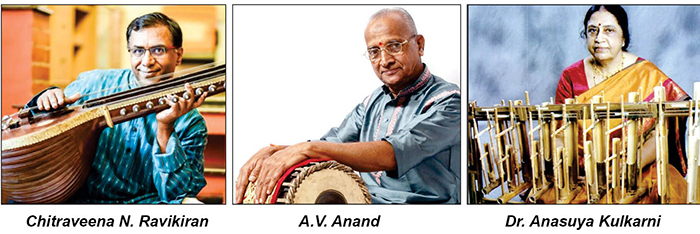
Administrator, composer
His guru nurtured a wish to open a higher institute of music and in order to fulfill his guru’s wishes, Chowdiah established the Ayyanar College of Music with the help and support of K. Puttu Rao. The College has trained hundreds of exceptional vocalists and instrumentalists and even blind students over the years. The College functioned out of the premises of Bidaram Krishnappa’s Prasanna Seetha Rama Mandira, the construction of which Chowdiah helped complete. He produced a film, Vani (1943) in which he acted in a dual role and for which he also directed the music.
Chowdiah composed nearly 50 compositions, mainly krithis and thillanas, under the pen name Trimakuta. The compositions are in Kannada, Telugu and Sanskrit languages and in well-known ragas. He was awarded the prestigious Sangeetha Kalanidhi title by the Madras Music Academy in 1957. He was awarded the Fellowship of the Central Sangeet Natak Akademi in the same year. Chowdiah passed away in 1967 at age 72. He remains one of the greatest musicians of Karnataka, and indeed one of the great legends of Karnatak classical music.
Till date, there have only been two books on the compositions of T. Chowdiah. First of these is a publication of the University of Mysore, edited by Chowdiah’s prime disciple Prof. V. Ramaratnam and the second publication is by another disciple Dr. Anasuya Kulkarni. Both these books are in Kannada. The need of the hour is that his compositions reach the global audience. It is hoped that ‘Kala Kaustubha’, containing the English notations of the compositions and his life, serves to fill this gap and reaches students, aspirants and connoisseurs all over the world.
‘Kala Kaustubha’, authored by Dr. Padmavathi Narasimhan, includes the life and biography of T. Chowdiah with interesting anecdotes and some rare photographs, a detailed description of his innovation — the seven stringed violin — the violinists who played the seven stringed violin during Chowdiah’s period and afterwards and an elaborate analysis of each of his 33 available compositions with notations. All the compositions are given with meaning and notations. The readers who are curious about the literary value of the compositions can look into the meanings. Students of music and musicians can learn the compositions and present them on platforms. It is hoped that the book serves the interest of a wide range of music enthusiasts.—OSR
Vidushi Dr. Padmavathi Narasimhan, who has done her Ph.D on the life and contributions of T. Chowdiah, has authored an authentic book on the life and compositions of Chowdiah. She has studied the compositions in depth and explained in a simple way so that any reader can easily understand her analysis. Her analysis of compositions provides a fine window to understand the depth of Chowdiah’s knowledge of lyrics, Ragas and Talas. As she has chosen to present this monumental work in English, it can reach sangeetha rasikas globally.”
— R.K. Padmanabha, Senior Musician, who has written the Preface for the book ‘Kala Kaustubha.’



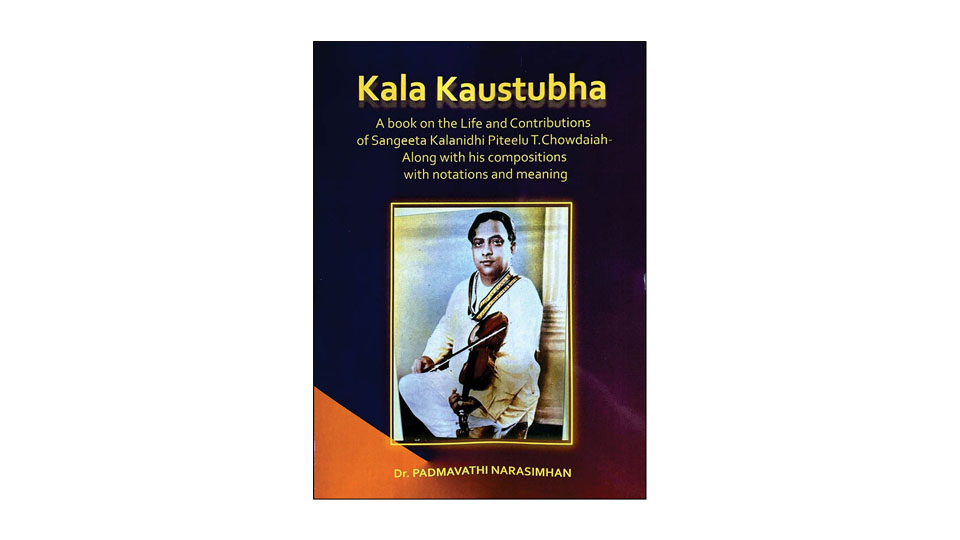
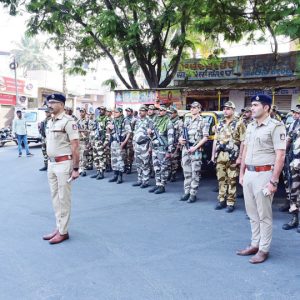
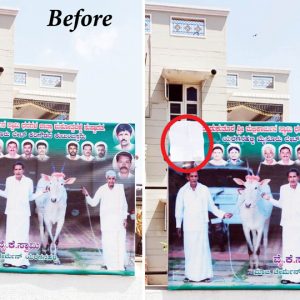
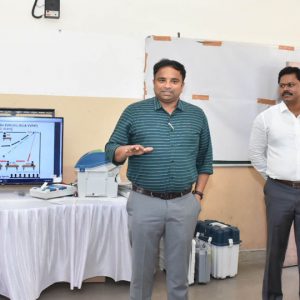
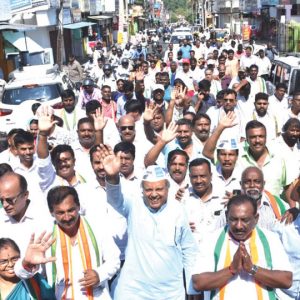
What is missing is the undeniable fact that Chowdiah was discovered in Tamil Nadu, thanks to the support and encouragement of Ariyakudi Ramanjua Iyengar and Chembai Vaydhyanatha Baghavathar. GNB, got he best out of him.
His best years were before 1957. Thereafter, he became busy as an administrator for his music college and Bidaram Krishnappa Mandira.
Still, he remained a truly Mysorean, playing in local events like the Ramanavami music concerts in Rajaram Agrahara and Basava Jayanti concerts in Srinivasa Agrahara, which were in pen air and were free to the audiences.
He introduced Veena Chitti Babu,in 1960s, as the rising star in his Bidaram Krishnappa Mandira Ramanavami event.
I was lucky as a member of audience in music concerts in Chennai Seshadripuram High School Ramamanami events, Mysore Bidaram Krishnappa Mandira, as well as the above Agrahara concerts, where he was an accompanying /solo violinist.
As those giants of Karnatak Music, who knew him well, are no more, their demise decades ago, this PhD work has got the facts on a second hand hearsay . The music audiences of that era have all gone.
=
Chennai Seshadripuram High School Ramamanami ? Or should this be Bangalore Sheshadripuram High School, Ramanavami. Thanks.